Fortune's eonymus: description, planting and care
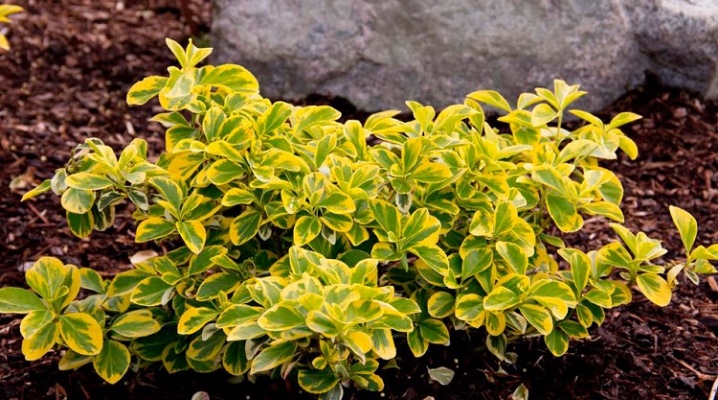
Fortune's euonymus is an ornamental shrub that is used as a ground cover plant. In the natural environment, the maximum height of the bush reaches 30 cm, in culture, the size depends on the variety. Landscape designers often use bushes in their solutions, because the euonymus is frost-resistant, undemanding to care for, and, moreover, does not shed foliage in the fall.
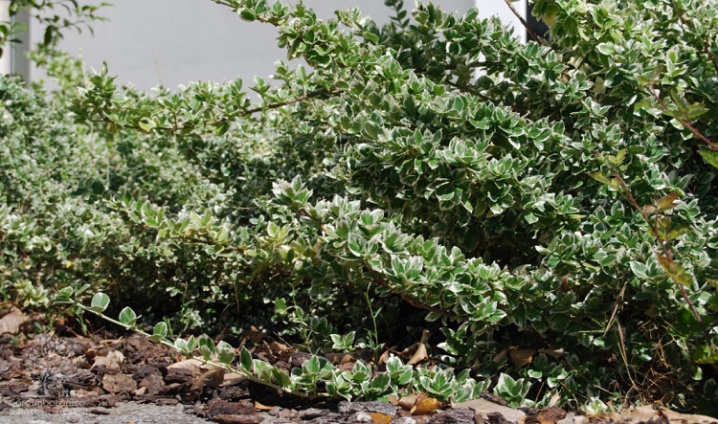
Peculiarities
Fortune's euonymus is an evergreen creeping shrub. The plant, which is not yet very common as a garden culture, is just beginning to gain popularity among gardeners. The shrub belongs to the Bereskletov family, China is its homeland. Under natural conditions, it prefers valleys and river floodplains for growth; it can often be found in undergrowth. With a low height, the shrub can reach a length of about 3 m.
The stems of the plant, when in contact with the soil, form additional roots in the nodes, which very easily grow into the ground, they can cling to the existing supports, thereby lifting the shrub up. Fortune's euonymus forms small flowers of a greenish-white tone. The fruits of the plant are bright, round in shape, they are unsuitable for food, they are distinguished by poisonous properties, but they are an excellent decoration for the bush.

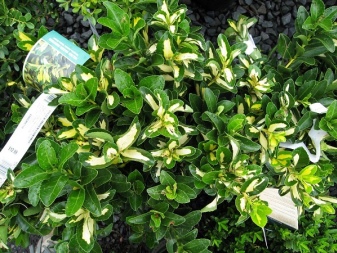
The shrub leaves have a beautiful appearance. The size of the leaves is small, their length varies from 2 to 6 cm, and their width is about 3 cm. They are elliptical in shape, with pointed tops, and in texture they are shiny and fairly leathery. On the stem, they are located close to each other. The color of the foliage depends on the variety; its shades change from green to reddish. The most common crown color has emerald tones with yellowish blotches or silvery green fragments.
The main characteristics of the shrub include:
- winter hardiness, can withstand low temperatures even down to -25 ° С;
- undemanding care;
- normal growth in drought conditions.
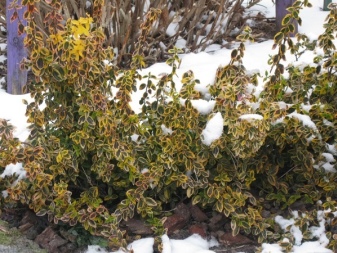
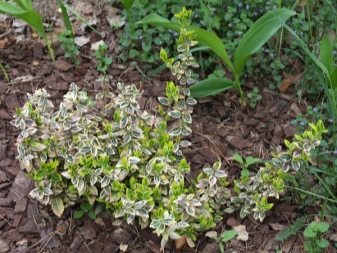
Popular varieties
Most of Fortune's spindle tree species have variegated plates. Besides, numerous varieties differ not only in the description of appearance, but also in size, as well as resistance to cold and the ability to self-growth.
- Emerald gold belongs to low-growing shrubs, reaches only 30 cm in height. The leaf plates are emerald colored with a golden or yellow border. With the onset of autumn, the foliage takes on an unusually beautiful color: bright pink or reddish. The leaves reach 2 cm in length.
The plant normally tolerates frosts down to -25 ° C.
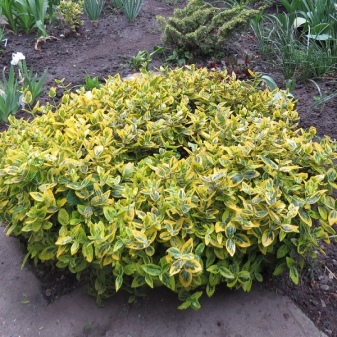
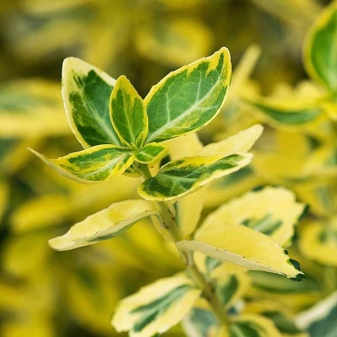
- Emerald gaiety also does not differ in a special height, it grows up to 20 cm. The leaves are ovoid, the color is dark green with a white edging. In the fall, they turn pinkish.
The variety is moderately frost resistant.

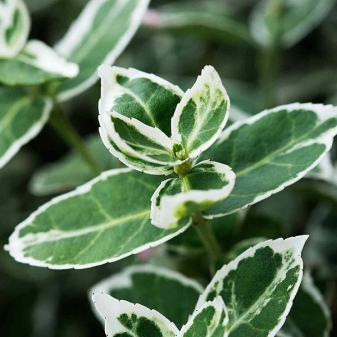
- Silver queen another representative of low-growing shrubs (about 20 cm). The leaf plates are bright green with white edging; in autumn they turn pink.
"Silver Queen" tolerates frost normally, so it does not need shelter for the winter.
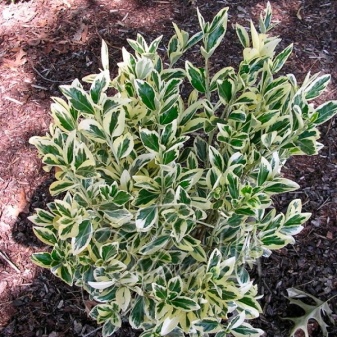
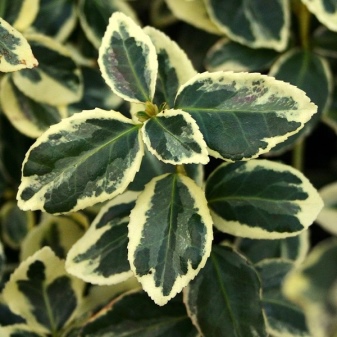
- Sunspot also has a squat, compact bush shape. Ovate leaves have a green tone with a yellow spot in the middle.Bushes grow slightly, for the winter period "Sunspot" should be covered, especially in regions with a cold climate.
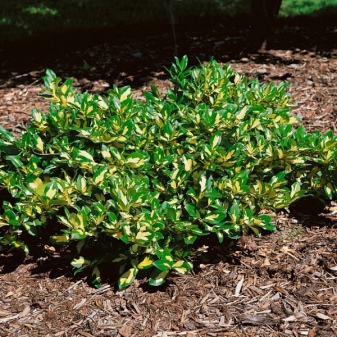

- Vegatus belongs to the low creeping varieties of the Fortune spindle tree and is characterized by a very fast growth. The leaf plates are leathery, oval in shape, about 4 cm long. Their surface is dull, dark green in color with many whitish veins and streaks. It grows very quickly, covering the soil with a dense carpet, and also easily braids any support.
At low temperatures, it feels normal without additional shelter.
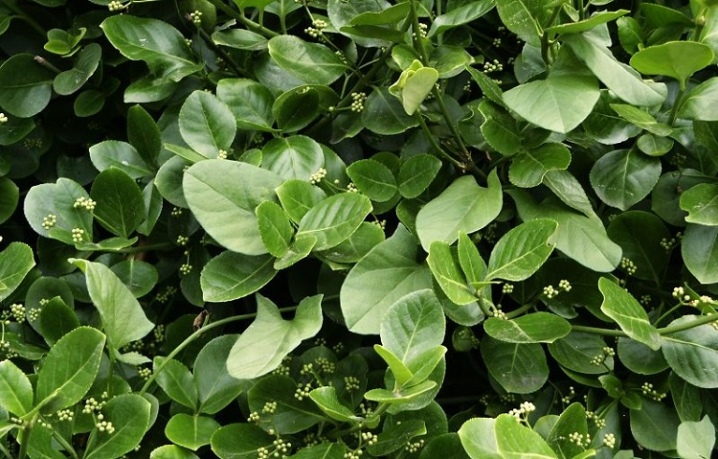
- Minimus - a mini-copy of the previous variety, characterized by slow growth. Miniature compact bushes reach a height of 5 cm. Tiny leaves are about 1 cm long. The crown is painted green all year round. The plant is used as a decoration for alpine slides, rockeries, and also in the form of borders.
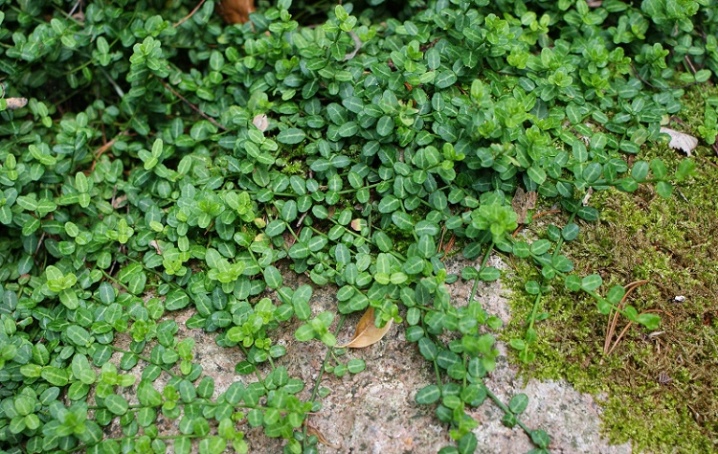
- Coloratus grows up to 40 cm, in breadth can reach up to 1.5 m. The leaves are oval, in warm weather they are emerald, and in autumn they are purple.
The variety is distinguished by high indicators of frost resistance.
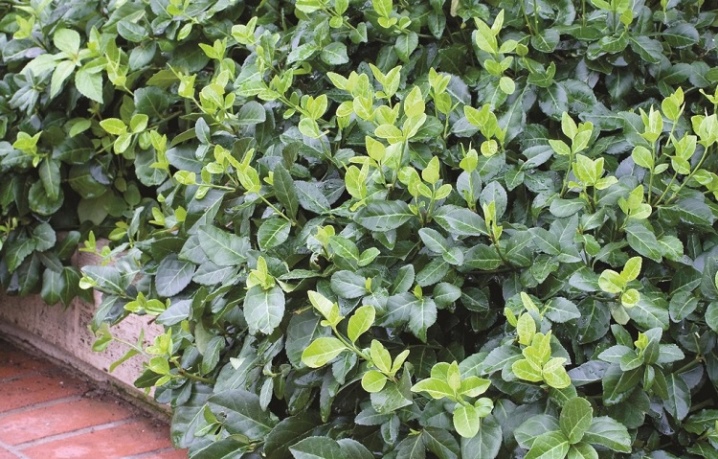
- Variegatus characterized by a height of 20-30 cm and green leaf plates with a white border.
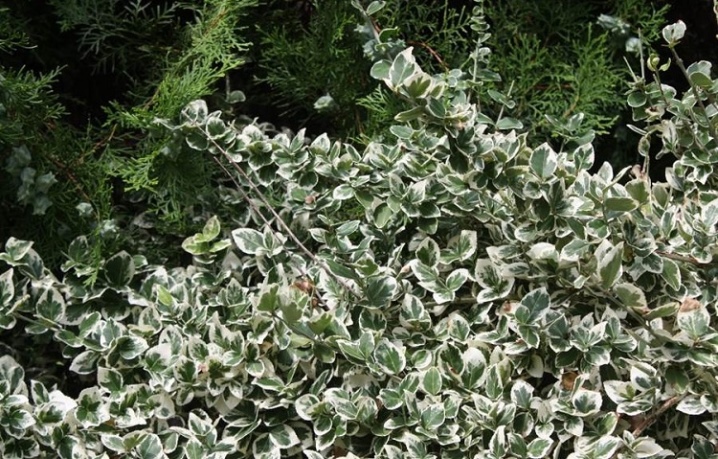
- Canadale gold belongs to tall shrubs (60-80 cm), despite this they have a compact appearance. The leaves are decorated with a yellow border.
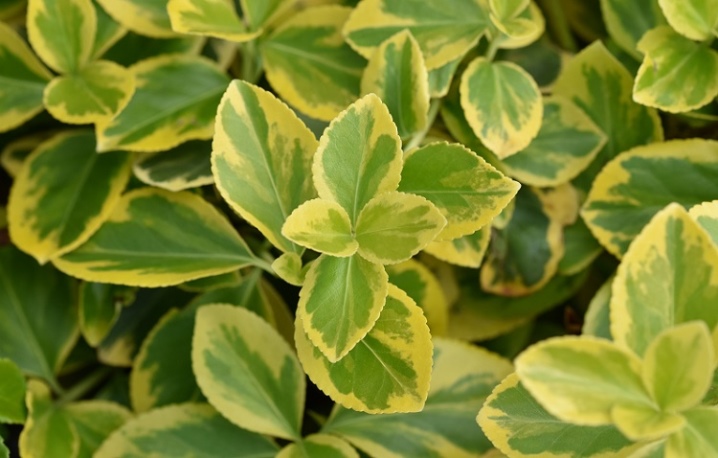
- Harlequin - a dwarf variety of euonymus. The peculiarity of the variety is the white color of young shoots. The leaves have a very original color: pink, yellow and cream specks are located on the white-green surface.
For growth, "Harlequin" prefers shaded areas.
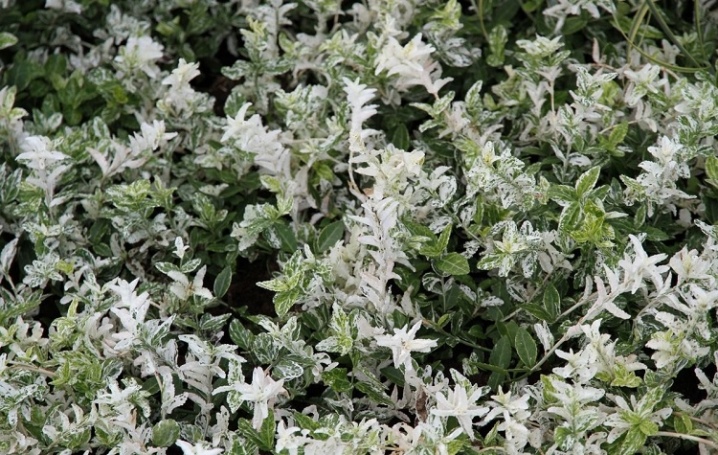
- "Blondie" can reach from 30 to 60 cm, is characterized by rapid growth. The rich green leaves have a yellowish-white spot in the middle of the plate. The variety blooms with tiny inconspicuous inflorescences of a greenish-yellow tone.
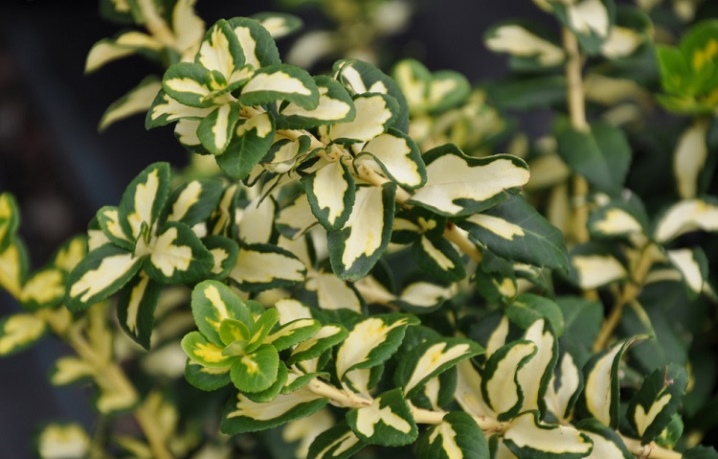
Growing as a houseplant
In addition to outdoor cultivation, Fortune euonymus is often grown as a pot culture. Domestic flowers love partial shade, in summer they can be taken out to the balcony or garden, and in winter the plant prefers coolness (+ 5-10 ° C). Bushes are planted in pots with a prepared mixture, for which they use:
- 2 parts of sod land;
- 1 part sheet;
- 1 part humus;
- 1 part sand.
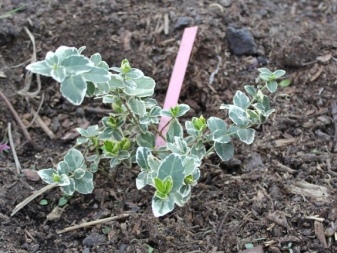
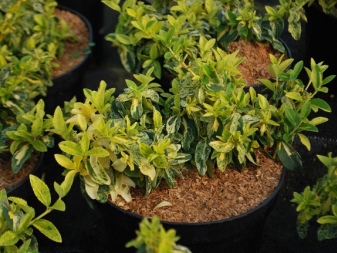
You can also take turf, sand and peat in proportions of 3: 1: 0.5. Water the plant as the topsoil dries out. It is worth making sure that the water does not stagnate at the roots; in winter, the amount of watering is significantly reduced. In the warm season, it is preferable to keep the plant on the eastern windows, but for the winter it is worth moving to the south side. The euonymus feels good at a moderate temperature in summer (about 18-20 ° C), while in winter 6-8 ° C is quite enough. The houseplant responds well to spraying, especially during the heating season, when the indoor air is very dry.
It is recommended to fertilize the flower about once a week; for this purpose, mineral dressings and organic matter are used. During the dormant period, in winter, the plant is not fertilized. Young bushes need an annual transplant, and adults should be transplanted every 3 years. Best of all, Fortune's indoor euonymus reproduces by cuttings. To do this, in the summer, cuttings of 4-5 cm in length are cut from young shoots.

The shoots are placed in a mixture of leafy earth with sand, after about 2 months they form roots and can be planted in flowerpots. Forchun's indoor euonymus can have both green leaf plates and variegated ones with yellowish-white spots. It is because of the decorative appearance of the crown that the plant is often planted as a houseplant. The bush withstands pruning well, so the crown can be shaped at your own discretion and create a spectacular home decoration from the plant. In spring, young shoots are pinched, and old or damaged ones should be pruned.
Home bushes do not bloom, although there are very few exceptions. The beautiful decorative appearance of the plant is increasingly the reason for its use in landscaping balconies. It is mainly grown in the garden in containers or flowerpots, and for the winter it is displayed on glazed balconies, but it is worth making sure that the temperature does not drop below -5 ° C. In order for the plant to survive the winter normally, it needs to insulate the root system. To do this, put foam plastic or a layer of sawdust under the flowerpot and tie it with burlap.
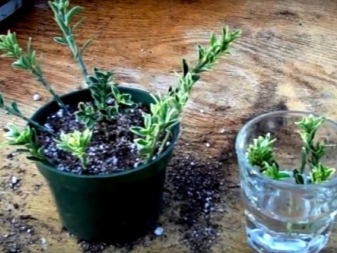

How to plant in open ground?
Euonymus prefers sunny places for growth, but does not like direct sunlight. The optimal planting site will be a part of the garden with light partial shade. You can choose a place under a tree with a not too dense crown. For planting, it is better to purchase seedlings that have reached 3 years old, since their root system is already well formed and strong enough.
It is recommended to plant plants in the spring after the soil warms up normally, the optimal time is the last days of April-early May.
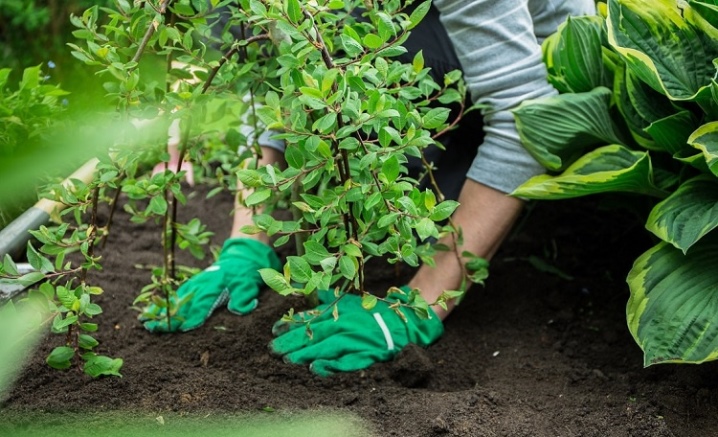
You can plant Fortune's euonymus in the fall, but there is a high probability that a bush with a weak root system may not have time to take root before the onset of cold weather. Experienced gardeners in this case recommend planting the plant in a pot, moving it indoors for the winter, and planting it in open soil in the spring. The primer is suitable with a neutral PH, good air permeability. You can prepare a suitable composition yourself. It will require:
- leaf land - 5 parts;
- sod soil - 1 part;
- humus - 3 parts;
- sand - 1 part.
The hole is dug twice as much as the horse system of the plant, its bottom is well tamped and sprinkled with a layer of drainage. The bush is placed in a recess, watered and covered with earth.
It is recommended to mulch the plant with humus or sawdust after planting.
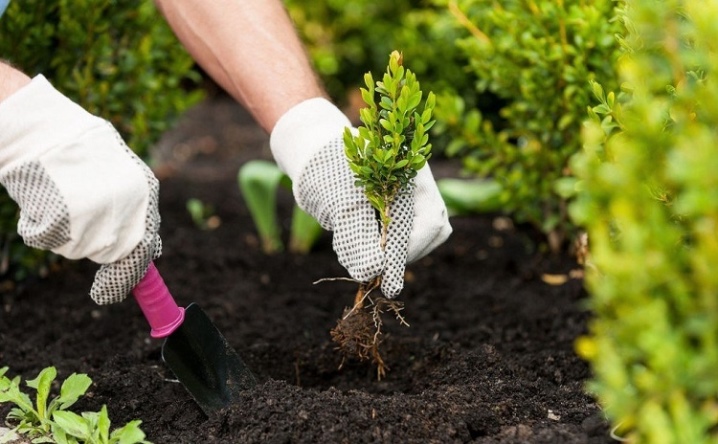
How to take care of it properly?
Fortune's euonymus is an undemanding plant. Caring for him is not difficult and does not take much time.
Watering
Euonymus normally refers to a lack of moisture and may well do without watering for some time, but this will affect its vegetation. In the heat, the shrubs need to create additional moisture, but in rainy periods it is better to refuse watering.

Top dressing
The plant needs fertilizers to preserve its decorative appearance. For the first time, the bush is fed in April with organic fertilizers, and at the end of summer it is worth adding phosphorus-potassium or superphosphate fertilizers.
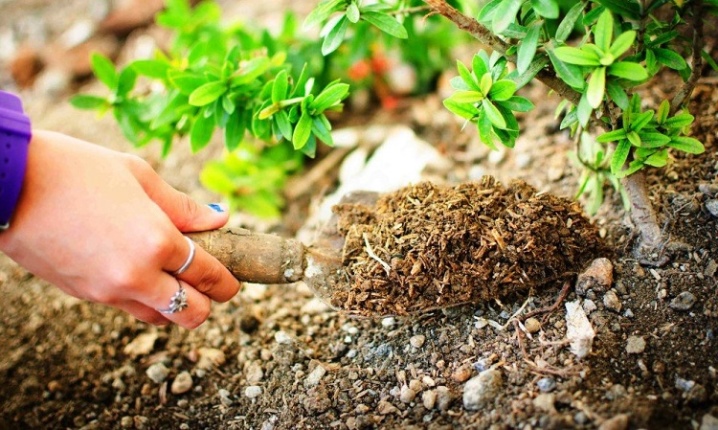
Pruning
Crown formation should be carried out in early spring and late autumn. Cut off dry and damaged parts of the plant, and also give the shrub the desired shape. In the fall, it is worth cutting off the protruding branches that spoil the appearance of the bush. Cutting under the root is also well tolerated, and in the spring, young shoots will begin to grow together and grow more densely.
It is recommended to process the cuts on the branches with garden pitch.
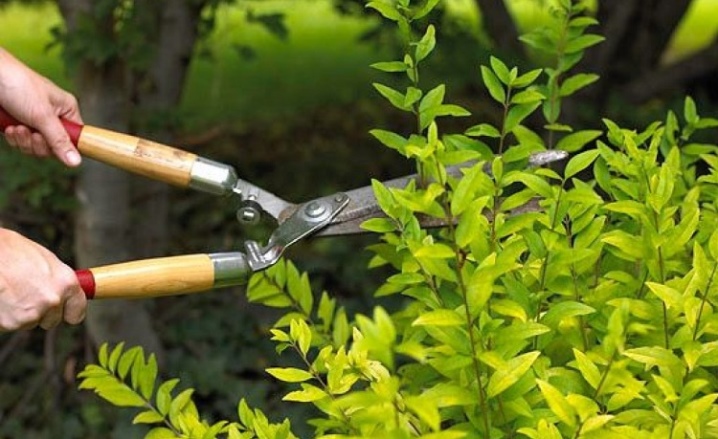
Preparing for winter
Most varieties of Forchun's euonymus are frost-resistant, but young bushes, as well as those varieties that are not resistant to cold weather, should still be covered with straw, spruce branches or dry foliage, and then sprinkled with snow. Frozen roots have the ability to recover in spring.
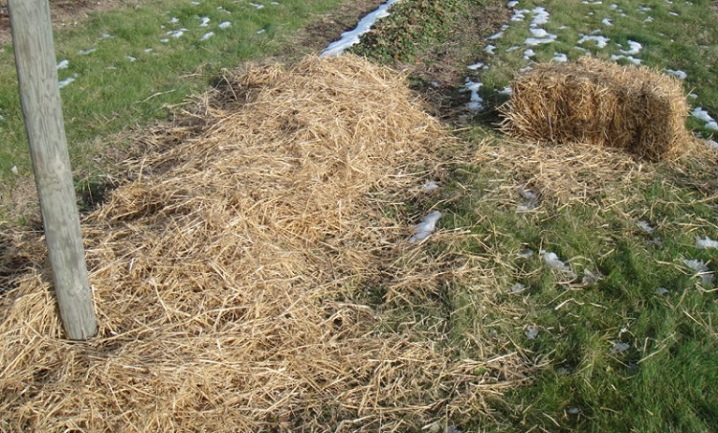
Reproduction methods
This shrub can be diluted in different ways, each gardener can choose the most suitable one for himself.
Cuttings
Quite frequent and one of the most effective ways to reproduce euonymus. The procedure is carried out in the summer. Cuttings are cut into a length of about 10 cm, it is advisable to choose not yet lignified shoots for this. Slices should be moistened in a Kornevin-type stimulator and planted in a container with fertile soil.
From above, the container is covered with film or glass and placed in a shaded place, periodically moistening. After about a month, the cuttings take root, they are transplanted for wintering in pots, and in the spring - in open soil.
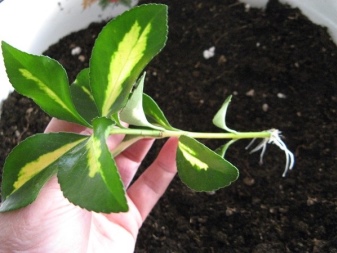

Layers
It is also a very effective breeding method for Fortune's euonymus. In this case the lower young shoot is bent to the ground, fixed in this position and buried in earth... The future plant is provided with systematic moisture, and after the formation of roots, it is separated from the mother bush and transplanted to a permanent place of growth.

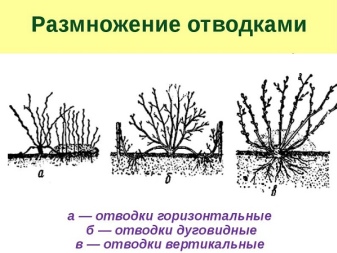
Dividing the bush
The fastest and most effective method for growing euonymus. Only adult bushes are used for it. The shrub is dug up, the rhizome is divided into several parts, each of which must have a growth point, part of the root and at least a couple of shoots. Delenki are planted right away in their places.
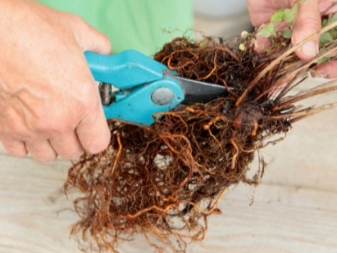

Seeds
In January, the seeds are kept in a solution of potassium permanganate and sown in a mixture of sod land and river sand. After about 3 months, seedlings begin to appear, they are dived in separate pots, and a month later the seedlings are planted on the site. You can sow seeds right away in open soil in the spring; for the winter, young bushes are well covered by creating a mini-greenhouse.

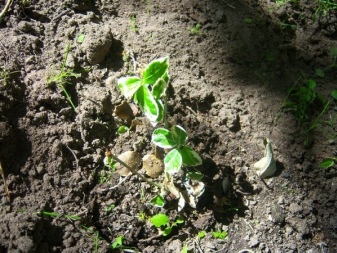
Diseases and pests
Fortune's euonymus is distinguished by a fairly good resistance to diseases. Due to excessive moisture and lack of drainage, the plant can be affected by fungal diseases, the most common of which is powdery mildew. It can be detected by the presence of a grayish-white bloom on the leaf plates. When infected, the foliage dries out and falls off, the treatment consists in removing the affected parts and treating the plant with Bordeaux liquid. It is also worth regulating watering and feeding the bush with nitrogen-containing fertilizers.
Of the pests, euonymus can damage aphids, scale insects and spider mites. The fight against them consists in treating the shrub with insecticidal preparations.
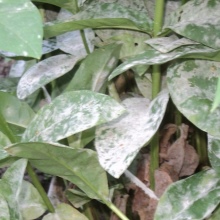
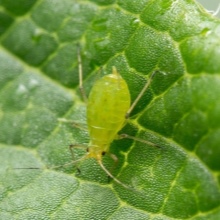

Use in landscape design
Forchuna's euonymus is an excellent option for garden designers due to its beautiful decorative appearance and ease of crown formation. It is recommended to plant plants in dense large groups or create a mix of varieties. The shrub is widely used in decorating gardens and plots, planting it:
- as a ground cover plant;
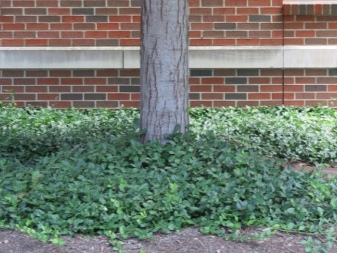
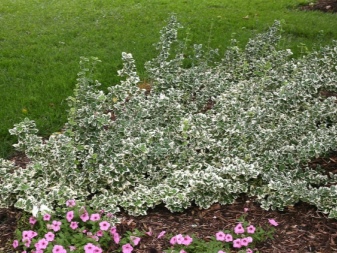
- in rocky gardens;

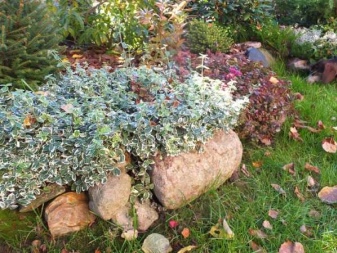
- on the alpine slides;
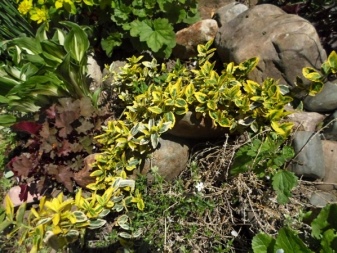
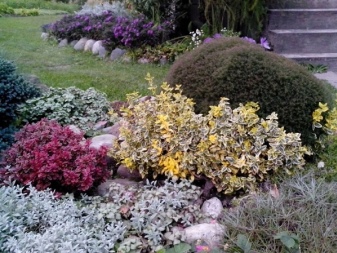
- as a hedge;

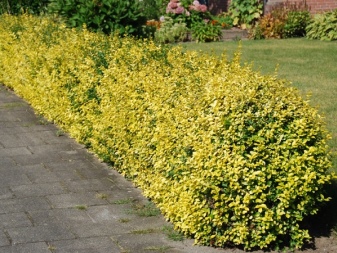
- as borders and parterres;
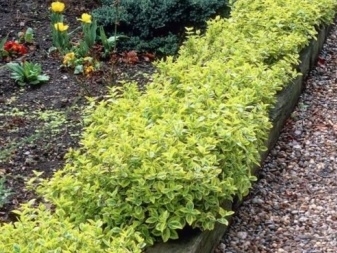
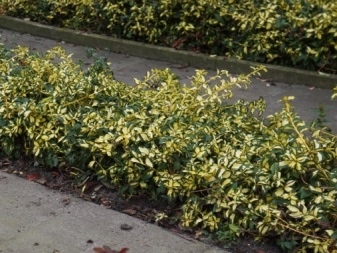
- framed by benches and gazebos;
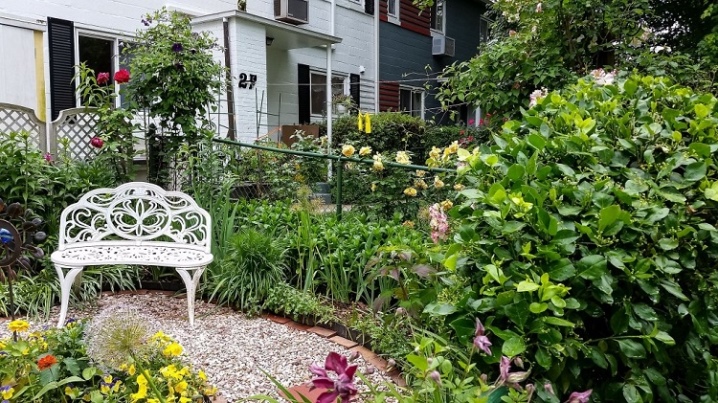
- as a decoration of artificial reservoirs.
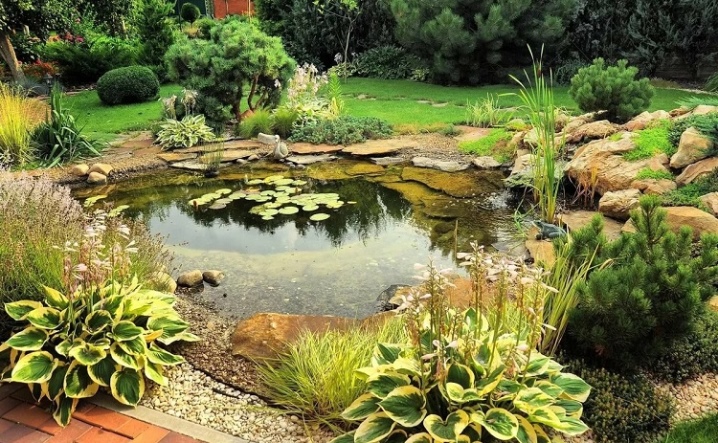
The flower beds are framed with euonymus bushes, in addition, it goes well with other plants in mixborders. The shrub looks beautiful on low supports; in a milder climate, it is used along with ivy in vertical gardening of plots.
Forchun's euonymus in group plantings with other low shrubs, especially conifers, is remarkably adjacent and looks harmoniously. Due to its ease of maintenance, it is used in landscaping parks, squares, alleys and squares. The plant tolerates air pollution well, so it can be planted even along roads.
The euonymus will give any composition a complete and well-groomed look.
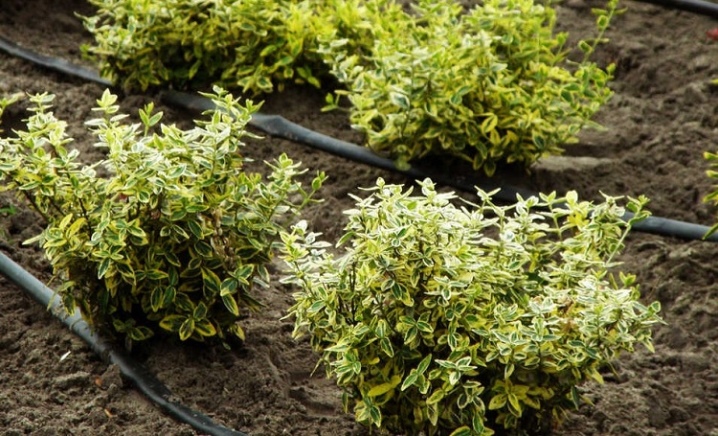
You can learn about the benefits of the perennial Beresclet Fortune from the video.



































































The comment was sent successfully.